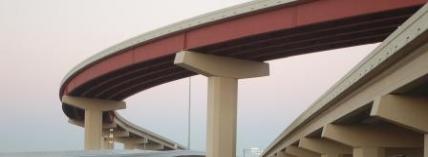Is Fulfilled Prophecy of Value for Scholarly Apologetics?
During the past twenty years, evangelical Christian apologetics has made significant progress in some areas. Today in the field of philosophy, the Christian theist has access to a secular audience and is able to challenge openly the assumptions of skeptics and atheists [Plantinga, Willard].
In the field of astrophysics, the concept of an infinitely old universe has fallen upon hard times, and the notion of "a creation event" is generally recognized [Jastrow, Ross]. Statements of the anthropic cosmological principle ("It's as if the universe were exquisitely tuned, almost as if to accommodate us" [1] are even finding their way into introductory physics and astronomy textbooks.)
I find this a refreshing reversal from the dogma of metaphysical naturalism that has saturated these scholarly disciplines for over a century. It is good to see the idea of a Creator, especially a biblical one, regaining intellectual credibility in these parts of our secular world.
But despite these successes, something seems to be missing. Yes, theistic philosophers can openly present positive arguments for the existence of God and the rational basis for Christianity. Yes, astrophysics suggests that we need God to start the ball rolling – in just the right way – for there to be life somewhere in the universe. But even if a skeptic grants us the logical necessity for a creator God, say 10-20 billion years ago, we are missing an important factor: Is God relevant today?
Is God Relevant?
How do we demonstrate this? If we as Christians consistently acted like God is relevant in our lives, that would help: Changed lives are a powerful witness. But personal testimony and answered prayer, while very important and essential, can all be dismissed as subjective criteria by the religious skeptic. How can we as scholars show that God is relevant to our skeptical culture and academic colleagues? This is a big question, and to begin to answer it we need to argue that God acts in human affairs; that He is not "wholly other." We first need to establish that God controls or at least influences history.[2]
I believe that the best tool that God has given us to illustrate His influence of history is fulfilled prophecy. I have several reasons for this:
1) This is the chief evidence that God offers in the First Testament to verify His existence and claims. Isaiah 41:21-23, 44:7-8. Deuteronomy 18:20-22. "And who is like Me? ... let them declare to them the things that are coming and the events that are going to take place."[3]
2) Some prophecies provide tangible, long-lasting evidence of their fulfillment, making them easier for outsiders to verify than many other works of God. Miracles, for example, are usually one-time experiences. For those who were not present and who must only rely on the testimony of eyewitnesses, their plausibility may be questioned. Moreover, as we see with some of Jesus' miracles, there can be confusion among the eyewitnesses themselves about what actually occurred.[4] Some prophecies, on the other hand, relate to future historical events that are open to review and investigation at later times: Did such an event actually occur, or not? For example, is the present state of a city or region consistent with a prophecy made thousands of years ago? The apostle Peter reminds us of the great value of prophecy, noting that his own witnessing of the miraculous Transfiguration made "the prophetic word more sure, to which you do well to pay attention as to a lamp shining in a dark place."[5]
3) Fulfilled prophecy established the reliability of the text and its transmission, thus challenging the liberal criticism of prophetic books. One school of modern criticism views the First Testament prophets as radical social reformers. Max Weber notes: "The preexilic prophets from Amos to Jeremiah and Ezekiel, viewed through the eyes of the contemporary outsider, appeared to be, above all, political demagogues and, on occasion, pamphleteers."[6] Robert Carroll argues that these 'pamphleteers' made no predictions, but were only poets: "The original poets were free spirits, poets of the imagination, denouncing the social structures of their own time, but through redactional transformation have become conventional 'prophets', a fixed form of institutional activity, and thereby made to serve purposes which they themselves might very well have despised."[7] Carroll proposes that "questions of authority in the postexilic period" necessitated the "radical shift which transformed the poets and intellectuals of the past into 'prophetic' mediators of the divine word."[8]
Hans Barstad rightly criticizes Carroll's approach as anti-historical[9] and points out that by making the preexilic prophets disappear into the pens and imaginations of postexilic redactors, Carroll overlooks the fact that "the different phenomena described in Jeremiah and the other prophets reflect the phenomenon of prophecy in the ancient Near East as such."[10] In other words, if Carroll's model is correct, then ancient Israel is unique among her neighbors in having no prophets who advised their king, decried social ills, or gave warnings about the future.[11]
I propose that we can move beyond the cultural parallels noted by Barstad and argue at a higher level: If the prophetic books contain genuine predictions, who made them? The original prophet? The redactor? Was third, fourth, or tenth 'Isaiah' the real prophet? We can pose haunting questions, like "Why didn't the redactor 'clean up' the predictions that had failed to come true by his time (cf. the Ezekiel prophecy below)?" We are led to the conclusion that long-range future predictions in prophetic books would not have survived the heavy editing that radical critics claim took place. Hosea's predictions of Israel becoming a nation again (in an unbelieving condition), or Daniel's 70 weeks prophecy about the coming Messiah are too risky for a postexilic editor to leave in![12]
Given these advantages (God endorses prophecy as an apologetic tool, some fulfillments have tangible results that we can investigate today, and these fulfillments help refute religious skepticism), are conservative scholars working with fulfilled prophecy today? Not that I am aware of! One finds the topic in an occasional master's thesis[13], relegated to undergraduate term papers, or in popular works[14], but it seems like the discussion of fulfilled prophecy died in scholarly circles with the publication of J. Barton Payne's Encyclopedia of Biblical Prophecy in 1973 (Highly abbreviated, outline format). I see two possible reasons for this: First, it seems like conservative scholars have been scared away from the topic by the abuses of Hal Lindsey's The Late, Great Planet Earth or Charles Dyer's The Rise of Babylon: Sign of the End Times. Second, the topic may be considered 'old' and hence it is not fashionable to study it. However, because of the apologetic issues involved, we need good historians, linguists and scholars to revive serious debate in this field.
For starters, we need to focus on fulfillments that are clear and obvious, but which liberals try to dismiss or ignore. Further, we should stress prophecies that were fulfilled well after New Testament times so that there is no question of 'prediction after the event.' (The charge of 'prediction after the event' is the favorite ploy of biblical prophecy critics, and they will late date a text, or at least claim that a redactor inserted the 'prophecy' after the fact.)
Tyre ... and Sidon
As one example of a late-fulfillment prophecy, let us look at Ezekiel's proclamation against the city of Tyre, found in Ezekiel chapter 26. This is one of the most extensive prophecies in the Bible that is made against a leading hostile power. As we review the prophecy, we find ourselves fighting liberal skepticism at every step. We will see that it is no simple matter to refute the charge that Ezekiel's prophecy failed – until you look back over 2,000 years.
Background: Tyre was a major city-state of the Phoenicians, a people famous for their sea trade and technical skills. As a commercial center, we should think of Tyre as the Manhattan, Hong Kong, or Singapore of the ancient near east.[15] The ports and main temples of Tyre were situated on an island ½ mile off the coast, making them impervious to attack. Like Manhattan and Hong Kong, Tyre was highly dependent on the mainland for its resources (water, food, wood) and land-trade routes.
1) The first challenge to Ezekiel's prophecy involves his statement that Nebuchadnezzar would attack Tyre. While this argument had force at the turn of the century, Jacob Katzenstein notes: "The many doubts about the authenticity of Ezekiel's words concerning a siege of Tyre by Nebuchadnezzar were shattered after Unger published a tablet which is an official receipt for provisions 'for the king and the soldiers who went with him against the land of Tyre.'"[16] The wording of the tablet strongly implies that the king himself headed the campaign and at least part of the following 13-year siege.
2) Once an external source confirmed the historicity of this siege of Tyre, skeptics focused on the next oddity: Nebuchadnezzar is described as attacking Tyre using land siege equipment! Walther Eichrodt ridicules this, noting the host of ancient references that describe Tyre as "an island in the midst of the sea," and he proposes that these verses are a "war song" added by later disciples to spice up the passage.[17]
Archaeologists and historians are not so quick to dispose of these verses: Bikai stresses that, due to severe space constraints on the island, the majority of the population and most of Tyre's factories and warehouses were located on the mainland.[18] Katzenstein discusses the letters of Qurdi-assur-lamur to Sargon which show the extensive interaction between the independent island port of Tyre and the Assyrian-controlled mainland.[19]
Perhaps the best collaboration with Ezekiel's description of the Babylonian attack and siege of Tyre comes from a campaign report of the Assyrian king Esarhaddon, who mentions building earthworks against Baal king of Tyre and withholding from them food and water.[20] Moreover, it appears that the descriptive phrase "in the midst of the sea" does not require that Tyre be exclusively an island city: Esarhaddon Prisms A and B refer to Tyre's neighbor, the Phoenician coastal city-state Sidon as a "fortress town, which lied in the midst of the sea."[21] Also, Prism B includes Tyre in a list of cities located "on the coast of the sea." There seems to be some flexibility in ancient descriptions of coastal cities, so we should not try to press one description too far.
3) Critics then move on to their most serious charge: Nebuchadnezzar did not destroy the island city of Tyre. Clearly the prediction failed, and this failure is even admitted by Ezekiel himself (29:17-21) when he predicts that God will give Egypt to Nebuchadnezzar's troops as payment for their hard work in besieging Tyre.
Before responding to this, we must note two features in the prediction. The first is the opening statement that God will bring "many nations" against Tyre, "like the waves of the sea" (verse 3). This is a clear indication that we should not expect one nation or one attack to produce the severe destruction and final state of desolation that Ezekiel predicts. Second, we note that the attacker changes from singular (he) to plural (they) between verses 11 and 12. Up through verse 11, Ezekiel describes Nebuchadnezzar entering the gates of the city, trampling its streets, and slaying people. Verses 12 and following describe later waves of attackers (they) who take booty, destroy the city, and throw its debris into the water.
A closer look at Ezekiel 29:17-21 reveals that God's (and Ezekiel's) stated concern is not that Tyre was not taken, but that the troops did not receive adequate pay for their efforts. The historical record is clear that Nebuchadnezzar finally subjugated Tyre even though he did not raze the island. Babylonian records refer to a new king ruling Tyre after the siege, to the royal family of Tyre living in Babylon (in exile), and to a Babylonian official who governs Tyre.[22]
In summary we can reconstruct the following: Nebuchadnezzar, like Esarhaddon a century before him, waged a conventional land-based attack against the mainland portion of greater Tyre. He successfully captured the mainland, but not before most of the occupants had a chance to flee to the island fortress, taking the best of their goods with them. After a 13-year siege, the island was starved into submission, and became a vassal of Babylon. There was a change of leadership and undoubtedly some tribute paid, but the island was not pillaged. Given the minimal return for their effort, God rewarded Nebuchadnezzar's troops by granting them success against Egypt. Ezekiel 29:17-21 is not 'making lemonade out of a lemon' or trying to cover for a failed prophecy; it is simply rewarding the first of the many waves of nations that will follow.
4) Alexander's attack against the island city of Tyre in 332 B.C. is famous in military history. While invading Persia and Egypt, Alexander did not want to leave his flank exposed to a possible counterattack from Tyre, a vassal of Persia and the strongest naval power on the Mediterranean. Rather than waste time besieging the island for years, he decided to build a land bridge out to the island and take it by direct attack. This dramatic venture is well documented in Arrian's Anabasis Alexandri.
Many commentators feel that Ezekiel's prophecy was fulfilled in Alexander's attack, and some liberal scholars argue for a late date for Ezekiel by claiming that later disciples inserted the material that describes Alexander's siege so well.[23] Clearly, Alexander fulfilled the comments that the rubble of Tyre would be thrown into the sea, since the mainland ruins were used to build the land bridge out to the island.[24] However Ezekiel predicts that Tyre would not be rebuilt, and that it would become a place for the spreading of fishnets. From Arrian's descriptions it is very clear that Alexander did not level the island fortress, in fact, he had Tyre rebuilt. Tyre remained an important trading and manufacturing center that was fought over by Alexander's immediate successors, the Ptolemies and the Seleucids.[25]
Recent excavations at Tyre show how large the city was in Roman times. A hippodrome with a seating capacity for 60,000 people and a large necropolis were discovered on the mainland in the 1970s. Clearly in New Testament times, the prophecy of Ezekiel was not fulfilled: Tyre was a thriving commercial center when the First Testament was distributed throughout the Roman Empire by Jewish and Christian communities alike. Thus it seems strange for critics to propose that a late redactor inserted the material about Alexander 'after the fact,' but was so foolish to put in (or leave in) these obvious errors.
5) Tyre served as a major trading and manufacturing center throughout the Byzantine and Muslim periods. During the Crusades, Tyre remained strong and well-fortified, surviving a siege by Saladin in 1187-88 A.D. Finally, in 1291 A.D., the last wave of the nations crashed against Tyre. The Mamluks from Egypt took Tyre, massacred the citizens or sold them into slavery, and destroyed the city as part of their 'scorched-earth' policy to thwart any attempt by the Crusaders to return.[26] The region then suffered under inter-sect Muslim rivalry, a major earthquake and plague. Several travelogues written during this period remark that the site was essentially abandoned.
In the 1760s a small settlement at Tyre was encouraged by regional authorities, which grew into a small fishing village. Tyre finally became a place for the spreading of fishnets.
6) Over the past 30 years the city of Tyre has grown in size, thanks to a new water supply and Lebanese efforts to develop the excellent beaches near the site as a resort and tourist attraction.[27] However, the civil war and proximity to Israel make the region unstable today. Looting at the site is a major concern of archaeologists and historians. Despite this modest growth there seems to be no danger that Tyre will once again become the world-class commercial center and naval power that earned her the title of 'Queen of the Seas'.
Summary
While commentators may haggle over Nebuchadnezzar's siege, Alexander's battle, the editing of the text by redactor-disciples, and Ezekiel's supposed admission of his failed prophecy, it seems obvious that his prediction has been fulfilled for the past 700 years. I am not aware of any scholar who claims that Ezekiel's predictions about the city not being rebuilt and its fishnets were inserted by disciples or redactors after 1300 A.D. or 1800 A.D.
But weren't most ancient cities destroyed? Weren't many sites abandoned? One would think that if one wait long enough, eventually any site will be abandoned. While a detailed answer to these questions goes beyond the bounds of this paper, we can briefly say in response: Not necessarily. Tyre's sister city, Sidon, located about 20 miles up coast, serves as a good control for this possibility. Ezekiel prophesies (28:22-23) that Sidon will face war, plague and famine, but he never says that she will never be rebuilt or will be reduced to a small fishing village. Sidon has had a bloody past; for example, in 352 B.C., 40,000 Sidonians locked themselves in their city and set fire to it rather than submit to the Persians.[28] Yet today she persists as a small coastal city of Lebanon, a fact which hampers archaeologists from studying the area. Clearly, if Ezekiel or a later editor had simply switched the names of these sister cities in the predictions, neither would have been fulfilled.
Conclusion
Is fulfilled prophecy of value for scholarly apologetics? I would say yes. As I have tried to illustrate with the example of Tyre, it allows us to engage liberal scholarship and respond to liberal attacks on the reliability of Scripture. After all, somebody who wrote or edited the book of Ezekiel was able to predict the future. Moreover, fulfilled prophecy plays a critical role in apologetics because it helps to show that God influences history and therefore may be relevant to our personal lives.
However, it appears to me that conservative biblical scholars have shied away from the serious study of fulfilled prophecy because of the fear of liberal criticism and the sensationalizing publications of trendy popularizers. We need to retrieve this topic from the wastebasket of liberal skepticism and the soapboxes of doomsayers!
Bibliography
Arrian, Anabasis Alexandri. The Loeb Classic Library. Cambridge, MA: Harvard University Press.
Quintus Curtius, History of Alexander. The Loeb Classic Library. Cambridge, MA: Harvard University Press.
Diodorus of Sicily. Library of History. The Loeb Classic Library. Cambridge, MA: Harvard University Press.
Maurice Chehab, Tyre: History – Topography – Excavations. Translated by Leila Badre. Beirut. n.d.
Walther Eichrodt, Ezekiel: A Commentary. Philadelphia, PA. The Westminster Press, 1970.
Martha Sharp Joukowsky, editor, The Heritage of Tyre. Essays on the History, Archaeology, and Preservation of Tyre. Dubuque, IA. Kendall/Hunt Publishing Co., 1992, 'Chapter 2: The Land of Tyre', by Pierre Bikai; 'Chapter 5: Phoenician Tyre' and 'Chapter 8: Medieval Tyre', by Patricia Maynor Bikai.
H. Jacob Katzenstein, The History of Tyre, from the Beginning of the Second Millenium B.C.E. until the Fall of the Neo-Babylonian Empire in 538 B.C.E. Jerusalem: The Schkocken Institute for Jewish Research, 1973.
J. Barton Payne, Encyclopedia of Biblical Prophecy: The Complete Guide to Scriptural Predictions and Their Fulfillment. Grand Rapids, MI: Baker Book House, 1973.
James B. Pritchard, editor, Ancient Near Eastern Texts Relating to the Old Testament. (ANET) Third Edition with Supplement. Princeton, NJ: Princeton University Press, 1969.
H.J. van Dijk, Ezekiel's Prophecy on Tyre (Ez. 26:1-28:19): A New Approach. Rome. Pontifical Biblical Institute, 1968. (Biblica et Orientalia - N.20).
References
Where full details are not included below, see Bibliography.
[1] Douglas C. Giancoli, Physics: Principles with Applications. Fourth Edition. Englewood Cliffs, NJ: Prentice Hall, 1995.
[2] See the interesting discussion of this problem from a liberal perspective in Walter C. Bruggemann, 'The Prophetic Word of God and History' Interpretation 48 (1994) pp.239-251.
[3] Isaiah 44:7b (NASB).
[4] Note for example Matthew 28:17 and John 12:27-30.
[5] 2 Peter 1:16-19.
[6] Max Weber, Ancient Judaism. New York, 1952, p.267. Cited by Robert Carroll, 'Poets Not Prophets', Journal for the Study of the Old Testament 27 (1983), p.27.
[7] Carroll, ibid., p.28.
[8] Carroll, ibid., p.29.
[9] Hans M. Barstad, 'No Prophets? Recent Developments in Biblical Prophetic Research and Ancient Near Eastern Prophecy'. Journal for the Study of the Old Testament 57 (1992), p.46.
[10] Barstad, ibid. p.52.
[11] Harry A. Hoffner, Jr., 'Ancient Views of Prophecy and Fulfillment: Mesopotamia and Asia Minor'. Journal of the Evangelical Theological Society 30 (1987) pp.257-265.
[12] In apologetics we should be cautious in using messianic prophecy as proof for the reliability of the Bible. The skeptic can dismiss them by saying that the early church made Jesus look like he fulfilled them! However, once the reliability of the Bible is established on other grounds, then we can turn to its messianic prophecies and ask, "Who, if anyone fulfilled these?" To that question, it is obvious that Jesus is the favored candidate.
[13] John Clark Beck, Jr., The Fall of Tyre According to Ezekiel's Prophecy. Master's Thesis, Dallas Theological Seminary, 1971.
[14] Josh McDowell, Evidence that demands a verdict: historical evidences for the Christian faith. San Bernardino, CA: Here's Life Publishers, Inc., 1972, revised edition, 1979.
[15] Patricia M. Bikai, Phoenician Tyre. The Heritage of Tyre. p.46.
[16] Katzenstein, The History of Tyre, p.324. Citing Unger, Zeitschrift fur die alttestamentliche Wissenschaft 44 (1926), p.316.
[17] Eichrodt, Ezekiel, p.371.
[18] The mainland portion of greater Tyre was called Usu by Assyrians, "old Tyre" by Greeks.
[19] Katzenstein, History of Tyre. pp. 232-238.
[20] Katzenstein, ibid., p.278. ANET, 1969, p.292b.
[21] ANET, 1969, p.290-1.
[22] Katzenstein, History of Tyre, p.332ff. Patricia Bikai, Heritage of Tyre, p.52. Eichrodt, Ezekiel, p.378, citing Zimmerli.
[23] Charles C. Torrey, Pseudo-Ezekiel and the Original Prophecy. 1930. Torrey felt that 'Ezekiel the prophet' was a complete fiction, and the book was written around 200 B.C. For others, see R.K. Harrison. Introduction to the Old Testament. Grand Rapids, MI: William B. Eerdmans, 1969.
[24] Katzenstein, History of Tyre, p.15. For classical sources, see Diodorus of Sicily XVII.40.4-5. Quintus Curtius, History of Alexander IV.2.18.
[25] Patricia Bikai, Heritage of Tyre, p.61.
[26] Patricia Bikai, ibid., p.78. Chehab, Tyre, p.25.
[27] Chehab, Tyre, p.26.
[28] Patricia Bikai, Heritage of Tyre, p.53, citing Diodorus (16.41-45).
This paper was presented at the 47th annual meeting of the Evangelical Theological Society, Philadelphia, PA, in November 1995.
© 2008 John A. Bloom
This article originally appeared in the Global Journal of Classical Theology, Vol. 1, No. 2 (1999). It is reproduced here by the kind permission of the editors.



